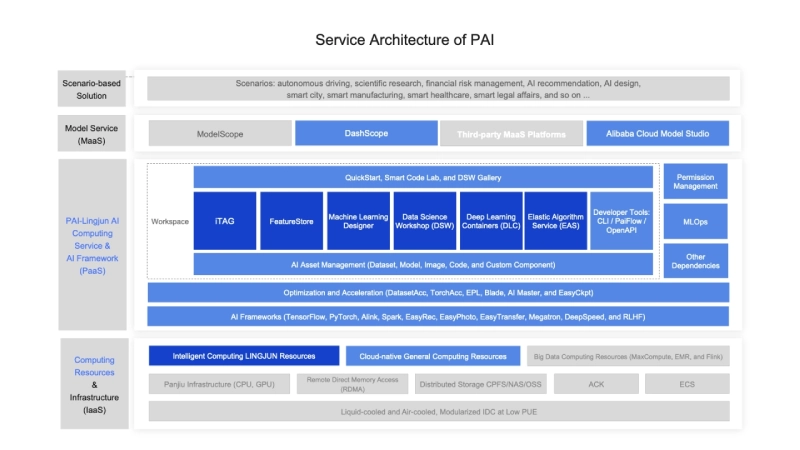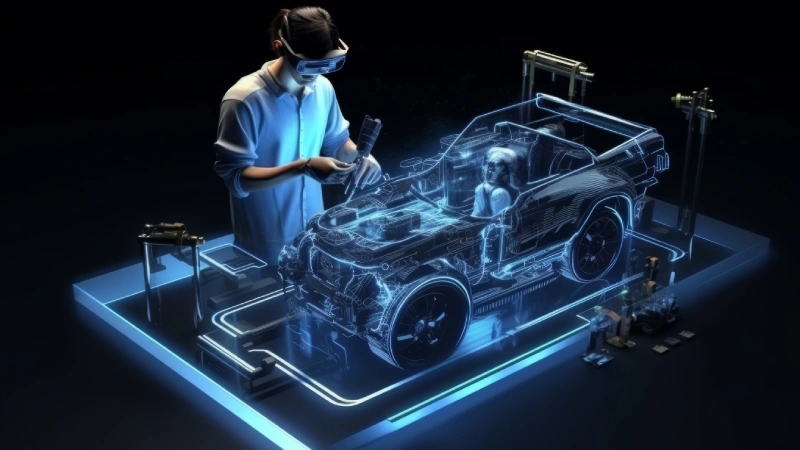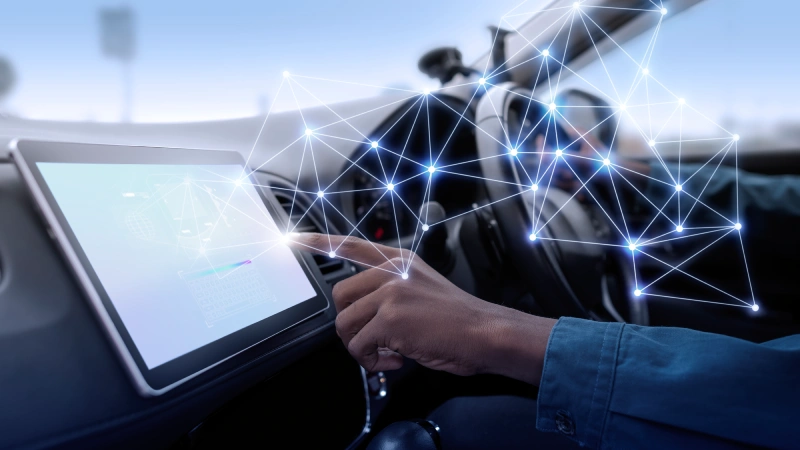Highlight
- PAI-TurboX is a big step forward in how AI models for self-driving and robotics are built.
- It helps developers and businesses work more efficiently by speeding up training across multiple layers, from hardware to data to software logic.
- With training speed increases of 48% to nearly 60%, it has the potential to reshape how quickly innovative systems are brought to life.
As self-driving cars and intelligent robots become more common, the time it takes to train their AI models is becoming a big challenge. Faster model training means quicker updates, better safety, and more efficient systems. On June 23, 2025, Alibaba Cloud introduced PAI-TurboX, a powerful tool designed to speed up AI development in autonomous driving. According to Alibaba, it can cut training time by up to 50%.
What is Alibaba PAI?
PAI-TurboX, short for Platform for Artificial Intelligence, was launched in 2015 and is now widely used across industries. It helps developers build, train, and deploy AI models, handling everything from raw data to deployment. It is part of various key services, supporting millions of developers and businesses.

Autonomous driving depends on several complex systems: perception, planning, and control. Each part relies on AI models trained using massive amounts of data: images, video, radar, and maps. Training these models takes time and a good amount of computing power. Delays in training slow down product releases and updates, while poor performance in real-time tasks can lead to safety issues. This is where PAI-TurboX comes in.
How PAI-TurboX Makes Training Faster
PAI-TurboX improves training speed by optimizing three main areas: system performance, data handling, and how AI instructions are executed.
On the system side, it ensures that the computer’s processors are used more efficiently. It ties certain tasks to specific cores in the CPU to reduce delays and uses real-time code generation to match the hardware’s capability. It also runs parts of the AI process in parallel, doing multiple tasks simultaneously instead of one by one. These changes help get more work done in less time.

Regarding data, TurboX makes handling the huge volumes of information needed for training easier and faster. It includes a custom DataLoader tool that prepares and delivers training data efficiently. This is especially useful in self-driving systems, where a model needs to process camera footage, LiDAR point clouds, and high-definition maps all at once.
Finally, at the instructor or “operator” level, TurboX fine-tunes how the AI computations happen. It combines multiple steps into fewer operations, reduces memory traffic, and allows for running without losing accuracy. This is particularly valuable in vehicles and robots that use smaller, less powerful hardware.
Real Results: Faster Training Speeds
Alibaba tested PAI-TurboX on three leading AI models used in autonomous driving. The results were very impressive.
The first model, BEVFusion, combines data from multiple sensors to detect 3D objects around a vehicle. Training this model was sped up by 58.5% with TurboX. That means developers can test and improve it in nearly half the time.
The second model, MapTR, creates high-definition driving maps in real time. These maps are key to accurate navigation, and using TurboX, training MapTR became 53% faster. This allows for more frequent updates and better performance in dynamic driving conditions.

The third, SparseDrive, is an end-to-end driving model that controls a vehicle directly from sensor inputs. Its perception stage trained 51.5% faster, and the full model improved by 48.5%. This helps engineers develop safer and more responsive driving software.
These results show that it is not limited to just one kind of task. It can improve training speeds across different AI models, making it a flexible and widely useful solution.
Why It Matters for the Industry
For companies building autonomous driving systems, speed is everything. Faster training lets teams build, test, and release new features more quickly. TurboX reduces the time and cost needed to develop AI models while supporting better safety testing, since models can be trained and validated more often.
In a space where real-world testing is expensive and slow, faster simulations and model training give teams more chances to catch problems before cars hit the road. The result is not just faster development, but safer systems.

Beyond self-driving, PAI-TurboX can be useful in other areas that use robotics and AI, like warehouse automation, drones, and factory robots. These technologies also depend on large, complex models trained with different data types. The flexibility of PAI-TurboX makes it a strong foundation for building next-generation smart systems.
As AI expands into more industries and everyday devices, tools like PAI-TurboX will play a key role in making intelligent systems faster, cheaper, and more reliable. Whether it is on the road, in the air, or inside a warehouse, the future of AI just got a serious performance boost.